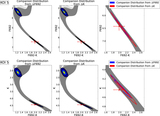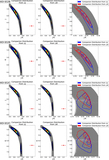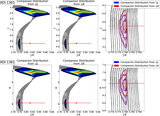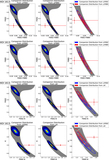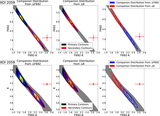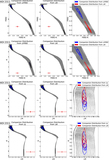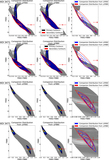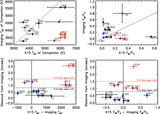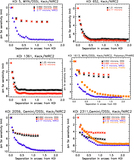Image Details
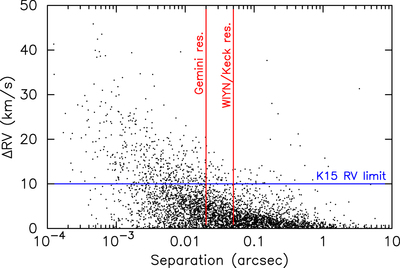
Caption: Figure 8.
Radial velocity difference between components in a set of 7958 simulated Kepler binary stars is plotted vs. their angular separation. The two red lines indicate the resolution limits expected for optical speckle imaging at the Gemini 8 m telescope (0.″02) and optical speckle imaging at the WIYN 3.5 m or near-infrared adaptive optics imaging at the Keck 10 m telescopes (﹩\sim 0\buildrel{\prime\prime}\over{.} 05﹩). Binaries with angular separations exceeding these lower limits can be spatially resolved. The blue line represents the 10 km s−1 lower limit to the difference in radial velocity between binary components for spectroscopic detection using the methods of Kolbl et al. (2015). The figure shows that the two complementary techniques should detect largely separate populations of binaries and that only a small fraction of the total (∼0.5%) can be detected simultaneously using both techniques.
Copyright and Terms & Conditions
© 2015. The American Astronomical Society. All rights reserved.


